Papers by Enrico Agliardi

Journal of Biological Regulators and Homeostatic Agents, Nov 1, 2020
The systematic analysis of parameters impacting implant primary stability is difficult to achieve... more The systematic analysis of parameters impacting implant primary stability is difficult to achieve with human cadavers or animal models, particularly for complex trans-sinus procedures to determine the effects of cortical layers and bone engagement on implant stability before and after a simulated load in vitro. Solid rigid polyurethane blocks, partially intersected by an 8-mm-thick space, were created to imitate tri-cortical situations, the presence of the sinus cavity, and the posterior maxilla with different degrees of bone atrophy. Implants were inserted through the cavity at an angle of 30˚ (scenarios 1 and 2) to imitate the clinical protocol. Controls simulating uni-cortical anchorage and no sinus cavity were also included (controls 1 and 2). Four parameters were measured: peak insertion torque, insertion work, resistance to lateral bending loads and extraction torque. Scenarios 1 and 2 displayed similar peak insertion torque to control 2, where all three groups anchored equal amounts of bone surrogate. The distribution of surrogate bone in contact with trans-cavity implants influenced both extraction torque and the degree of lateral bending. Sufficient peak insertion torque can be attained with a trans-sinus tricortical implant anchorage providing sufficient apical and coronal bone is engaged.

Clinical Oral Implants Research, Feb 22, 2023
PurposeTo retrospectively assess clinical and radiographic outcomes of immediately loaded full‐ar... more PurposeTo retrospectively assess clinical and radiographic outcomes of immediately loaded full‐arch fixed prostheses supported by axial and tilted implants up to 15 years of function.Materials and MethodsPatients with one completely edentulous arch received an immediate full‐arch fixed prosthesis supported by two anterior axial and two posterior tilted implants. Definitive prosthesis consisting of a CAD‐CAM titanium framework and acrylic teeth was delivered 6 months later. Patients were regularly followed to assess clinical parameters and marginal bone level (MBL) change. Multilevel regression analysis was performed to investigate factors affecting implant failure and MBL.ResultsSix hundred ninety‐two implants were placed in 72 maxillae and 101 mandibles. Seven maxillary implants (5 axial and 2 tilted) in 6 patients and 12 mandibular implants (6 axial and 6 tilted) in 5 patients failed. 15‐year cumulative implant survival was 97.51% and 96.91% in maxilla and mandible, respectively (p = .64). After 10 years, the difference in MBL between axial and tilted implants was not significant in the maxilla (p = .47, 65 patients), while it was in the mandible (p < .001, 80 patients). Significant higher bone loss was reported in the mandible at both 5‐ and 10‐year follow‐up (p < .001 and p = .004, respectively). Mixed‐effect multilevel linear regression evidenced a correlation between arch and bone loss at 5‐ and 10‐year follow‐up, while no correlation was found with age, gender, smoking, diabetes, and history of periodontal disease.ConclusionThis long‐term study suggests that the present technique can be considered a viable treatment modality for the immediate rehabilitation of both maxilla and mandible.

Clinical Implant Dentistry and Related Research, Jun 22, 2021
BACKGROUND Zygomatic implants alone or in combination with conventional implants have been used f... more BACKGROUND Zygomatic implants alone or in combination with conventional implants have been used for severe atrophic maxillary arches. Long-term outcomes of extramaxillary technique need validations. PURPOSE To retrospectively assess the clinical outcomes and the prevalence of surgical, biological, and prosthetic complications of implant-fixed complete dental prostheses (IFCDPs) supported by zygomatic implants up to 11 years of follow-up. MATERIALS AND METHODS Dental records of 34 subjects treated between October 2008 and June 2019 were reviewed. Patients received an immediate fixed full-arch prosthesis supported solely by zygomatic implants or by a combination of zygomatic and conventional implants. RESULTS A total of 90 zygomatic implants and 53 standard implants were placed. Up to 11 years of follow-up, two conventional implants were lost, leading to 96.2% success rate for conventional implants and 100% for zygomatic implants. Marginal bone loss for conventional implants averaged 0.85 ± 0.17 mm after the first year and 1.36 ± 0.12 mm after 10 years, resulting in full implant success. No prosthesis was lost. The main surgical complication was the perforations of the Schneiderian membrane, occurring in five patients and in seven sinus cavities. Considering the biological complications, mucositis for standard and zygomatic implants ranged between 21%-35% and 26%-40%, respectively. No peri-implantitis were reported. Soft tissue hypertrophy ranged between 1.8% and 30% for conventional implants and 1.1%-35% for zygomatic implants. Inflammation under the prosthesis ranged between 33% and 50%. For the mechanical complications, abutment loosening was recorded in 5.8% of cases (two patients), tooth debonding and fracture of the prosthesis happened in five subjects (14.7%), and loosening of the prosthetic screws was reported in one patient (2.9%). CONCLUSIONS Immediate rehabilitation of the severely atrophic maxilla with zygomatic implants alone or in combination with standard implants could be considered a viable treatment modality.
The International Journal of Oral & Maxillofacial Implants

Journal of Prosthodontics
PurposeThe aim of this in vitro study was to measure the insertion and removal torque values of d... more PurposeThe aim of this in vitro study was to measure the insertion and removal torque values of dental implant replicas inserted into artificial bone blocks using different surgical burs and drilling protocols.Materials and methodsFour types of artificial, polyurethane bone blocks were used with different thicknesses (1 and 2 mm) and densities (soft‐1 mm, soft‐2 mm, dense‐1 mm, and dense‐2 mm) of the simulated cortical and cancellous bone, respectively. Each bone construct was drilled with Straumann and Densah drills in both clockwise and counterclockwise directions for a total of 16 experimental conditions. For every scenario, 38 implant replicas were inserted and then removed after 1 min. Outcomes of interest were the insertion and removal torque values which were recorded by a torque meter. ANOVA and Tukey HSD tests were used to assess differences across each combination of drill, direction, and bone type.ResultsDensah counterclockwise registered statistically greater values for ...

Journal of biological regulators and homeostatic agents, 2020
Oral and oropharyngeal cancer represents the sixth more common type of cancer affecting the world... more Oral and oropharyngeal cancer represents the sixth more common type of cancer affecting the worldwide population. It has been estimated the number of 650,000 new cases per year globally and a greater prevalence has been registered among men. The main risk factors for oral cancer such as tobacco smoking and alcohol are uncontroversial and have been deeply investigated and evidenced in the scientific literature. Recently, viral infections related to Human Papilloma Virus (HPV), with the genotype 16 and 32, have shown a correlation mainly with oropharyngeal cancer (OPC) especially in the non-smoking and non-drinkers young adults. Its transmission is mainly related to sexually transmitted diseases (STDs) although its involvement in oral squamous cell carcinoma (OSCC) is still unclear. This review aims to explore the hypotheses of the OSCC etiology and other possible risk factors, such as chronic traumatisms, chronic periodontitis, and poor oral hygiene that affect directly the oral muco...

Journal of biological regulators and homeostatic agents, 2020
Several conditions as trauma, cancer surgical resection, fractures, congenital malformations and ... more Several conditions as trauma, cancer surgical resection, fractures, congenital malformations and periodontitis could bring alveolar bone defects. To avoid more invasive and less predictable regenerative procedures, Stem cells of different origins as pluripotent Embryonic Stem Cells (ESCs), undifferentiated multipotent Mesenchymal Stem Cells (MSCs) and Induced Pluripotent Stem Cells (iPSCs) were proposed as possible alternative. IPSCs have potential for proliferation and differentiate into all derivatives of the three primary germ layers: ectoderm, endoderm and mesoderm. According with their ability to involve in several cells type, Induced Pluripotent Stem Cells (iPSCs) could be proposed as alternative in regeneration either of mineralized tooth components or supporting tissue. The aim of this brief review is to describe clinical applications of Induced Pluripotent Stem Cells (iPSCs) in oral bone regeneration to employ their use in tissue regeneration in dentistry.

Journal of biological regulators and homeostatic agents, 2020
The aim of the study was to evaluate implant treatment for partial edentulism in a population of ... more The aim of the study was to evaluate implant treatment for partial edentulism in a population of controlled type I diabetic patients. The research hypothesis was that implant survival rate, prevalence of peri-implant tissue infection and marginal bone loss at 2 years follow-up would not differ from a non diabetic population. A total of 106 patients (47=women, 59=men, mean age 38.36 years) presented with partially edentulous jaws. All patients underwent a two stage implant surgery (105 maxillary, 100 mandibular). Diabetic type I patients (53) were scheduled in Group A, while 53 healthy patients formed the Control Group. Clinical and radiological controls were performed from baseline up to 24 months and implants survival rate, presence of peri-implant tissue infections and marginal bone loss were assessed in all ptients. Group A and Control Group were compared by analyzing data at implant level, through either an independent sample t-test, with respect to bone loss, or Fisher Exact te...
International Journal of Oral and Maxillofacial Surgery, 2017

Minerva stomatologica
The aim of this case report was to describe a modified endoscopic technique for enhancing visuali... more The aim of this case report was to describe a modified endoscopic technique for enhancing visualization in endodontic microsurgery. Tooth treated surgically showed a periradicular lesion of strictly endodontic origin. Following the reflection of a full mucoperiosteal papilla base incision flap, surgical access to the root was made through the cortical bone. The periradicular lesion was curetted, root-end was resected, and root-end cavity was prepared with a zirconium nitrate tip driven by ultrasonic device unit. Finally zinc oxide EBA-reinforced cement root-end filling was placed. Root-end management procedure was performed using an endoscope. Diving the endoscope lens in the bone cavity filled with saline solution contributed to improve visualization and keep clear the lens. Following clinical and radiographic assessment at 12 months postsurgery, the case was evaluated successfully. Thus, in conclusion, the endoscope provided excellent visualization of the surgical field during roo...
Riabilitazione implantoprotesica immediata della mandibola edentula mediante protocollo "all... more Riabilitazione implantoprotesica immediata della mandibola edentula mediante protocollo "all-on-four" / L. Francetti, D. Romeo, D. Spasari, C. Tassera, C. Folegatti, T. Testori, M. Basso, A. Antifora, M. Del Fabbro. - In: Italian Oral Surgery. - ISSN 1827-2452. - ...

Quintessence Publicacion Internacional De Odontologia, Nov 1, 2011
Objetivos: Este estudio se planteo para evaluar el pronostico a largo plazo de protesis completas... more Objetivos: Este estudio se planteo para evaluar el pronostico a largo plazo de protesis completas fijas de carga inmediata en el tratamiento de pacientes edentulos con atrofia osea extrema en la region mandibular posterior. Material y metodos: Se trataron veinticuatro pacientes edentulos que presentaban mandibulas posteriores atroficas mediante protesis completas soportadas por fijaciones axiales Y anguladas. La insercion de los implantes angulados se planifico cuidadosamente mediante analisis con tomografia computarizada y medicion de la anchura y altura del hueso residual. El tipo, longitud y diametro de los implantes y su angulacion se escogio de acuerdo con el protocolo All-on-4 y evitando el trayecto del nervio dentario inferior. Las protesis se colocaron en los dos primeros dias, tras la cirugia de implantes. La supervivencia de los implantes y el exito de la protesis se valoraron clinica y radiograficamente durante un seguimiento de hasta 42 meses. La medicion de la perdida osea periimplantaria se baso en radiografias periapicales despues de 12 meses de carga. Resultados: Todos los implantes sobrevivieron y todas las protesis funcionaban bien en el momento de resenar este trabajo. El seguimiento medio fue de 30,1 meses con un rango de 14 a 44 meses. La perdida osea media periimplantaria fue de 0,85 mm despues de 12 meses (0,8 mm en los implantes angulados y 0,9 mm en los implantes axiales). No se observaron diferencias significativas en la perdida de hueso marginal entre los implantes axiales y los implantes angulados. Conclusiones: La rehabilitacion inmediata de pacientes con mandibulas atroficas extremas puede llevarse a cabo con exito siempre y cuando se realice una cuidadosa planificacion y se preste especial atencion durante la colocacion quirurgica de los implantes, como lo demuestran los excelentes resultados obtenidos en este estudio.
The Journal of prosthetic dentistry, 2015
Implant rehabilitation of the posterior maxilla can entail difficulties due to reduced bone quant... more Implant rehabilitation of the posterior maxilla can entail difficulties due to reduced bone quantity and poor bone quality, especially after long-term edentulism. In some patients, multiple surgeries are necessary, which may lead to higher patient morbidity and longer treatment times before a prosthetic rehabilitation can be achieved. This article presents an immediate fixed prosthesis in a posterior atrophic maxilla supported by 1 anterior axial implant and 1 posterior tilted fixture placed with an intrasinus insertion. Additionally, a classification scheme for immediate treatment for the posterior maxilla based on the available residual bone is provided.

Quintessence international (Berlin, Germany : 1985), 2013
To test the hypothesis of the outcome of complete arch flapless guided implant surgery mandibular... more To test the hypothesis of the outcome of complete arch flapless guided implant surgery mandibular rehabilitations in the presence or absence of a residual band of keratinized mucosa (KM) < 6 mm wide in the vestibular-lingual aspect, with and without a modification of the surgical protocol. Thirty-nine patients were included in this study (12 men and 27 women), with a mean age of 62.5 years (range, 42 to 79 years), divided into 3 groups of 13 patients according to the status of residual band of KM: group 1, KM < 6 mm rehabilitated through a modified guided surgical protocol with flap opening to preserve KM; group 2, KM ≥ 6 mm; and group 3, KM < 6 mm; patients from both groups 2 and 3 were rehabilitated through flapless guided implant surgery without modification of the protocol. Group 2 and 3 patients were age- and sex-matched with group 1. Outcome measures were clinical attachment loss (CAL) ≥ 2 mm after 1 year (backward conditional regression), incidence of dehiscences, de...
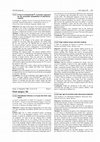
Journal of Cranio-Maxillofacial Surgery, 2008
The aims of this report was to assess the treatment outcome of the V-Two-V technique associated w... more The aims of this report was to assess the treatment outcome of the V-Two-V technique associated with the Nobel Guide TM concept for the rehabilitation of a fully edentulous maxilla and to compare the outcome of axial versus tilted implants. Methods: A male 58 year old patient eager to have an immediate fixed rehabilitation of his edentulous maxilla without bone grafting or sinus elevation has been treated with the V-Two-V technique & NobelGuide TM. A duplicate of the denture of the patient with radiographic marked was necessary. With this prosthesis, the patient made the TC scan exam. The TC DICOM files are acquired with the Procera software ® and the clinician could plan the surgery according with the V-Two-V configuration. A steriolitographic surgical guide was then realized and the technician was able to build the immediate fixed bridge. Following this surgical guide, two anterior implants (Nobel-Speedy™, Groovy ® , Nobel Biocare AB, Göteborg, Sweden) were placed axially in the pre-maxilla, parallel to the midline, in position of lateral incisors. Then, for each side, one implant was tilted distally approximately 30º-45º relative to the mesial implant previously positioned, close to the anterior sinus wall while another implant was placed tilted mesially 30º-45º close to the posterior sinus wall. The flapless surgery was relative simple and the prosthesis was placed 10 minutes after implant and Multi Unit Abutments (MUA) positioning. Results: None of the implants were lost. No significant difference in marginal bone loss was found between tilted and axial implants at one-year evaluation. Conclusion: The present preliminary data suggests that the V-Two-V technique together with NobelGuide TM could be considered a viable treatment modality for the edentulous maxilla. Absence of swelling and pain and a relative simple and short surgery seems to be the most positive aspects of this technique.
Implant Dentistry, 2007
This is a technique report of cranial bone harvesting for severe maxillary atrophy without genera... more This is a technique report of cranial bone harvesting for severe maxillary atrophy without general anesthesia. Materials: A patient of Class VI by Cawood and Howell underwent 2 extensive bilateral sinus lifts with 5 cortical blocks with sedation only. Results: The reconstruction made possible the placement of 8 Brånemark implants. The operation was performed as a day-hospital with a faster clinical and social recovery. Conclusions: This technique, by avoiding general anesthesia, makes calvarial bone grafting more comfortable for the patient and comparable to an intraoral harvest with less complications.
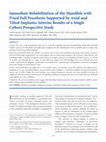
Clinical Implant Dentistry and Related Research, 2008
Purpose: The aims of this prospective study were to assess the treatment outcome of immediately l... more Purpose: The aims of this prospective study were to assess the treatment outcome of immediately loaded full-arch fixed bridges anchored to both tilted and axially placed implants for the rehabilitation of the mandible and to compare the outcome of axial versus tilted implants. Materials and Methods: Sixty-two patients (34 women and 28 men) were included in the study. Each patient received a full-arch fixed bridge supported by two axial implants and two distal tilted implants (All-on-Four®, Nobel Biocare AB, Göteborg, Sweden). Loading was applied within 48 hours of surgery. Patients were scheduled for follow-up at 6, 12, 18, and 24 months, and annually up to 5 years. At each follow-up, plaque level and bleeding scores were assessed; moreover, patient's satisfaction for aesthetics and function was evaluated by a questionnaire. Radiographic evaluation of marginal bone level change was performed at 1 year. Results: The overall follow-up range was 6 to 43 months (mean 22.4 months). Forty-four patients were followed for a minimum of 1 year. No implant failures were recorded to date, leading to a cumulative implant survival and prosthesis success rate of 100%. Plaque level and bleeding scores showed progressive decrease over time, parallel to increase of satisfaction for both aesthetics and function. No significant difference in marginal bone loss was found between tilted and axial implants at 1-year evaluation. Conclusion: The present preliminary data suggest that immediate loading associated with tilted implants could be considered a viable treatment modality for the mandible.

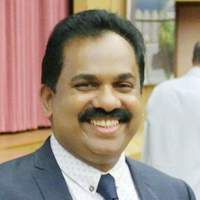



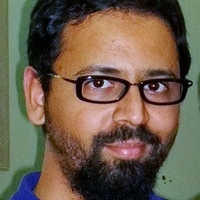

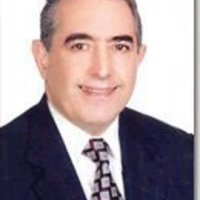
Uploads
Papers by Enrico Agliardi